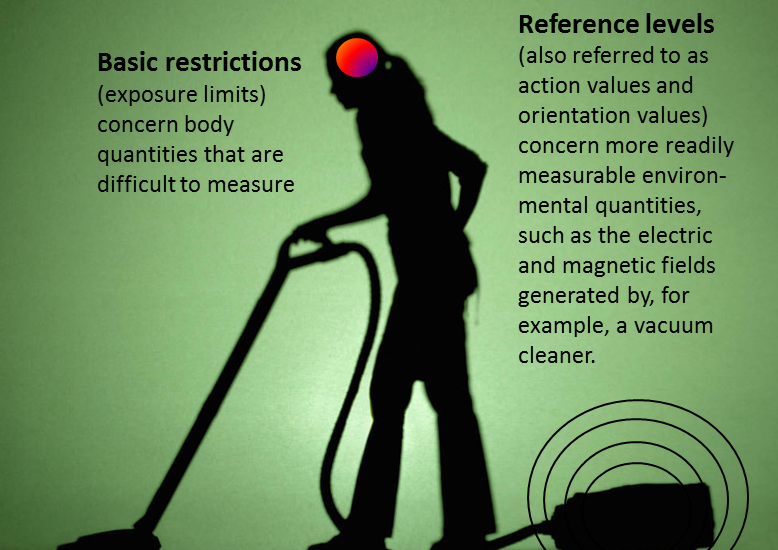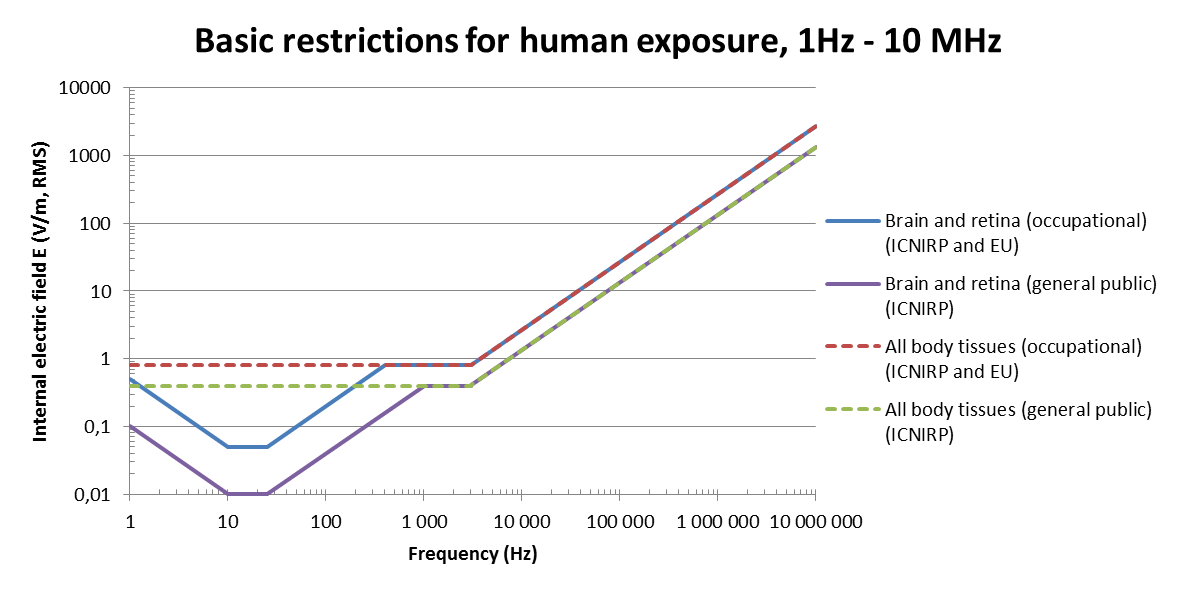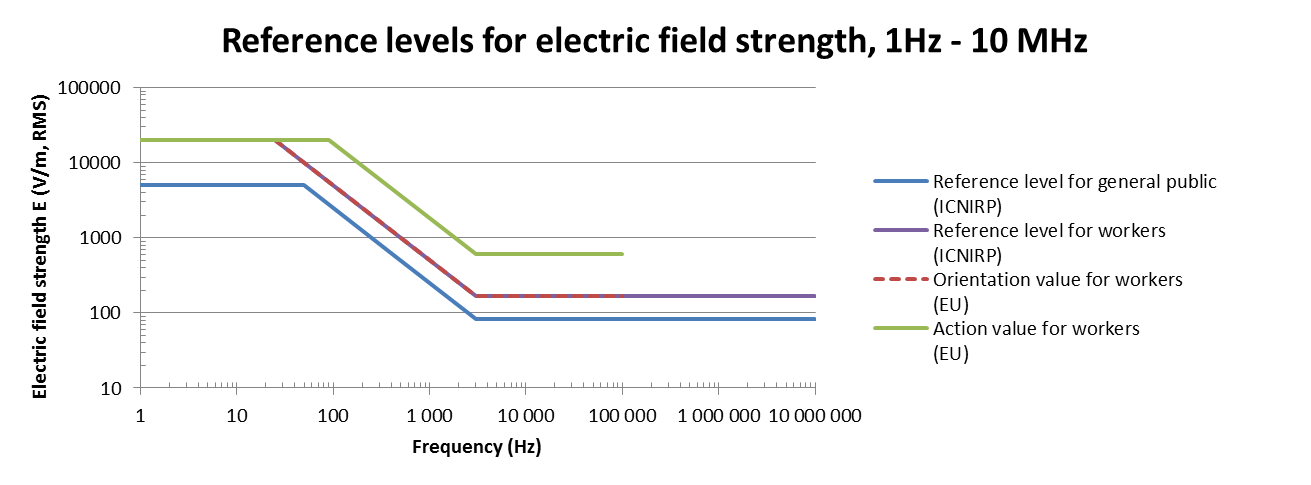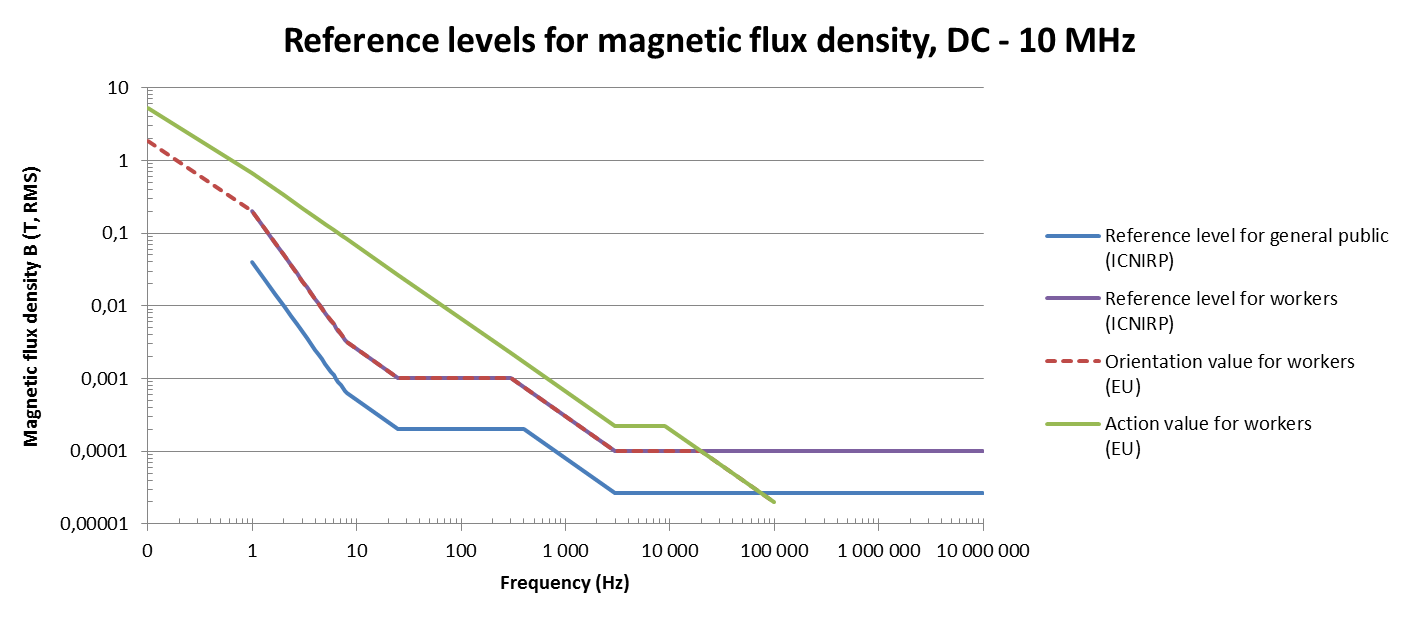|
Human exposure
Possible harmful effects of human exposure to electromagnetic fields have been considered by a number of international organisations, including the World Health Organization (WHO) and the International Commission for Non-ionizing Radiation Protection (ICNIRP). Other relevant organisations are ILO, IRPA, ISO, CENELEC, IEC, CIE, IEEE. ICNIRP has published several guidelines for limiting human exposure to electromagnetic fields. EU directives concerning this are based on the ICNIRP guidelines. The USA also has field exposure limits that are harmonised with the ICNIRP guidelines.
Basic restrictions (or exposure limits)The basic restrictions concern electric fields generated in the nervous tissue in the body. The EU Directive 2004/40/EC establishes exposure limit values (called basic restrictions by ICNIRP) for occupational exposure to electric and magnetic fields at frequencies between 0 and 300 GHz. No worker should be exposed to values exceeding these limits, which are based on the 1998 ICNIRP guidelines for human exposure to time-varying electromagnetic fields and which reflect health impact and biological considerations. Recommendations for basic restrictons for the general public are presented in EU Recommendation 1999/519/EC, which is also based on the 1998 ICNIRP guidelines. Reference levels (or action values and orientation values)The reference levels concern electric and magnetic field strengths in the exposure environment, which are more readily measurable quantities. Compliance with the reference levels is assumed to guarantee compliance with the basic restrictions. The EU Recommendation 1999/519/EC specifies reference levels for general public exposure to time-varying and static fields. The EU Directive 2004/40/EC defines action values and orientation values for occupational exposure to time-varying and static fields.
Occupational and general publicThere are different limits and reference levels for occupational and general public exposure to electromagnetic fields. The occupational values are higher, generally by a factor of 5, than those for the general public. The motivation for this difference is that it is assumed that workers will be drawn from a more restricted sub-set of the population (in terms of age and health), and will be routinely monitored if operating in a high-field environment. The general public, however, may be of any age and health condition and will not be routinely monitored for health issues relating to field exposure, or even aware that they may have been exposed to electromagnetic fields. In the case of workers wearing a pacemaker or AIMD, the ACGIH (American Conference of Governmental Industrial Hygienists) recommends limiting electric field exposure to 1 kV/m and magnetic field exposure to 100 µT. The guidelines set by the ICNIRP and IEEE do not specifically address the issue of AIMD. |
||






